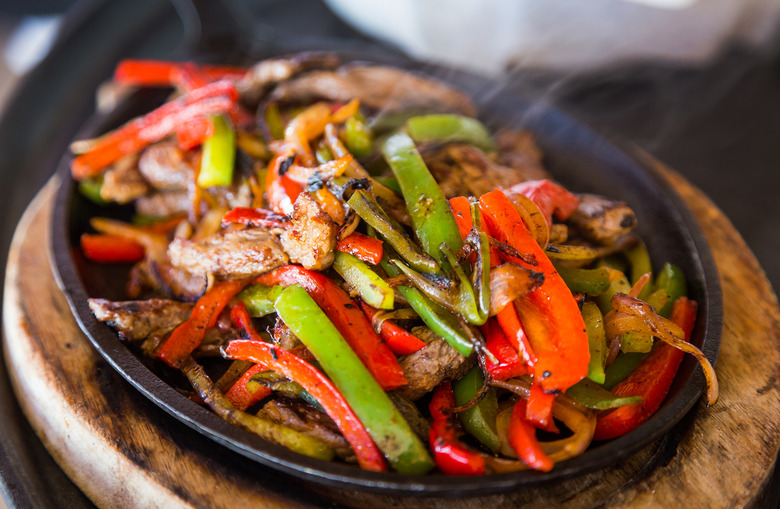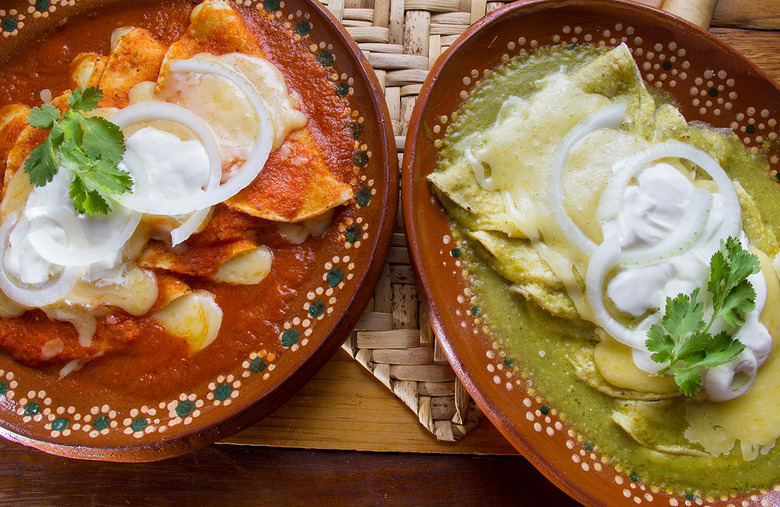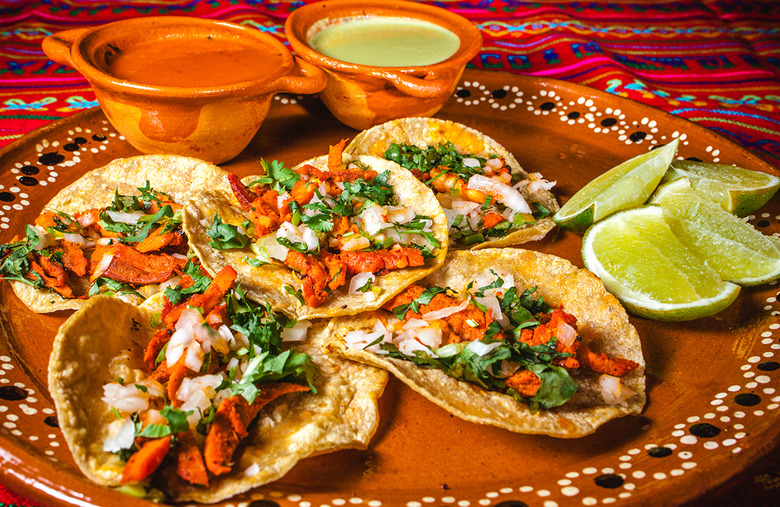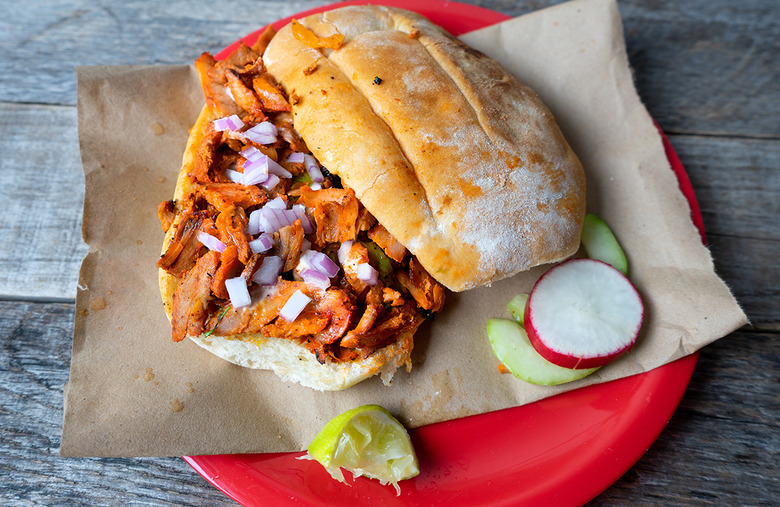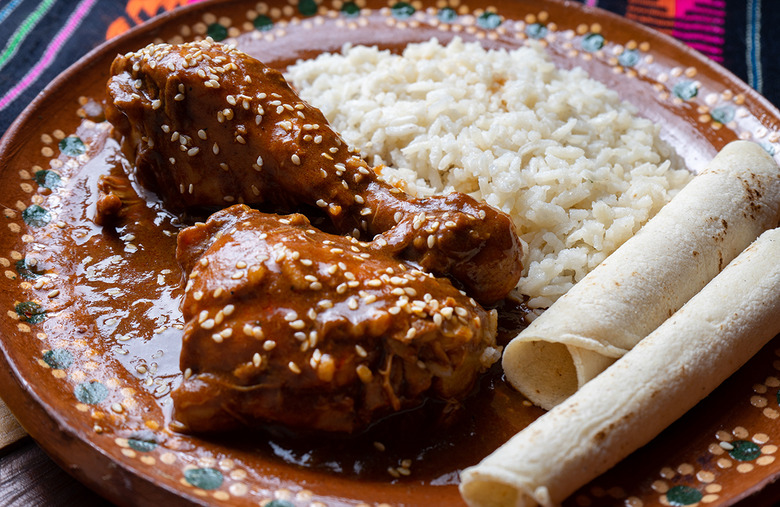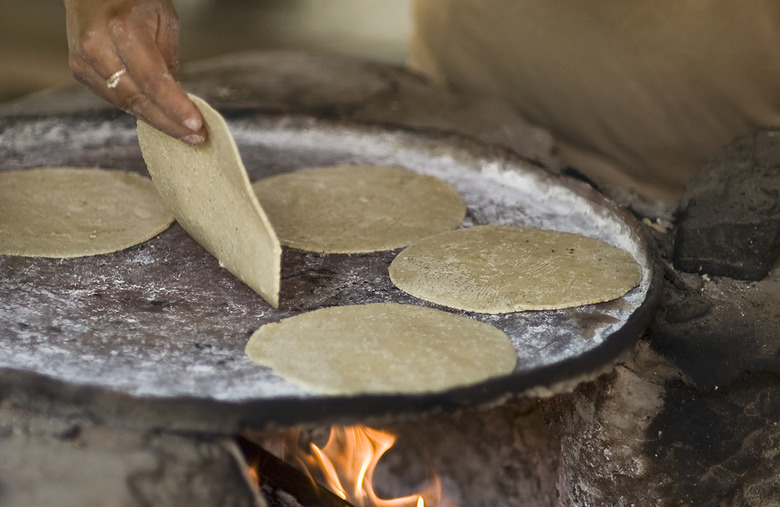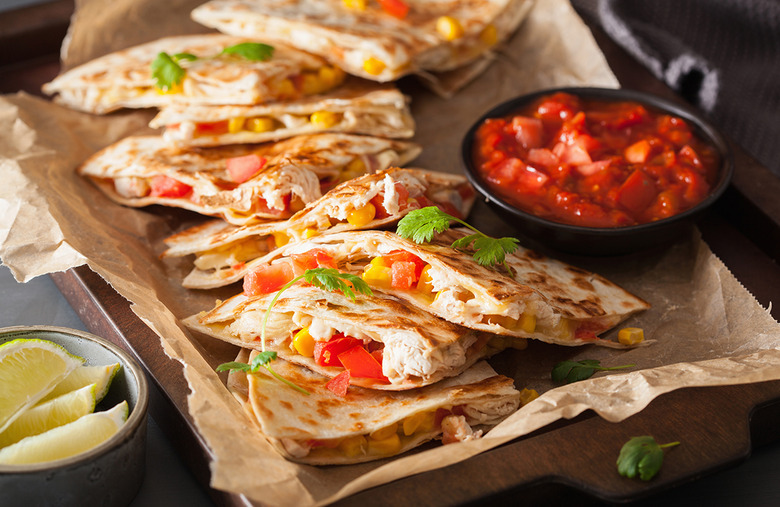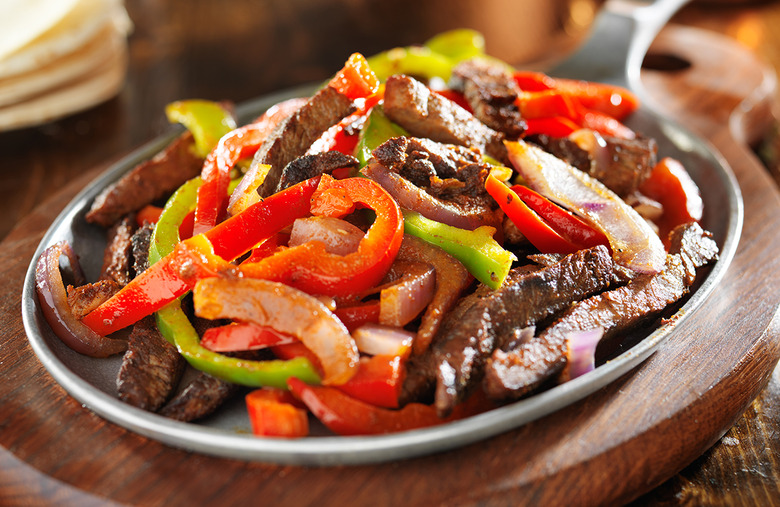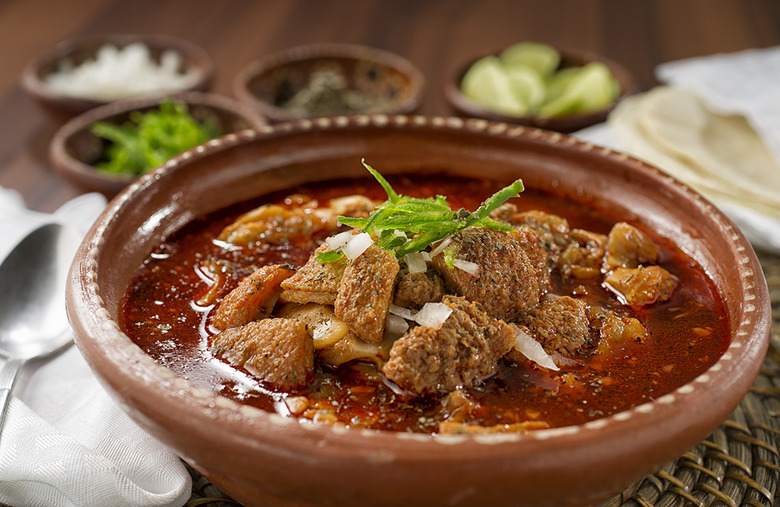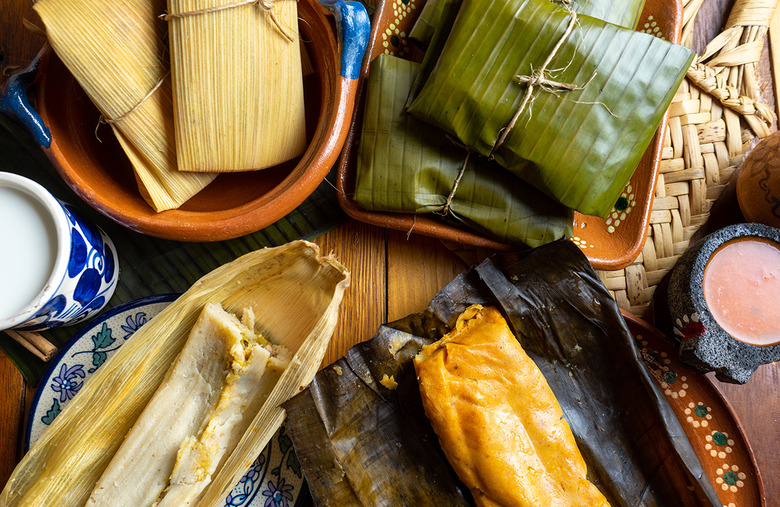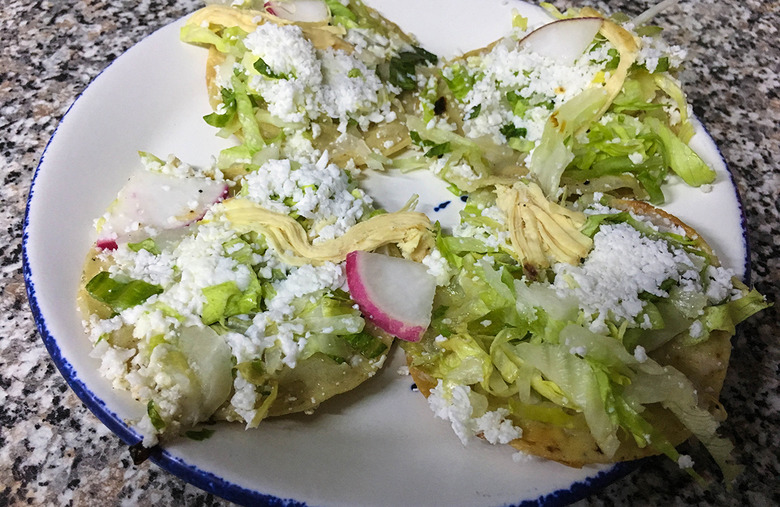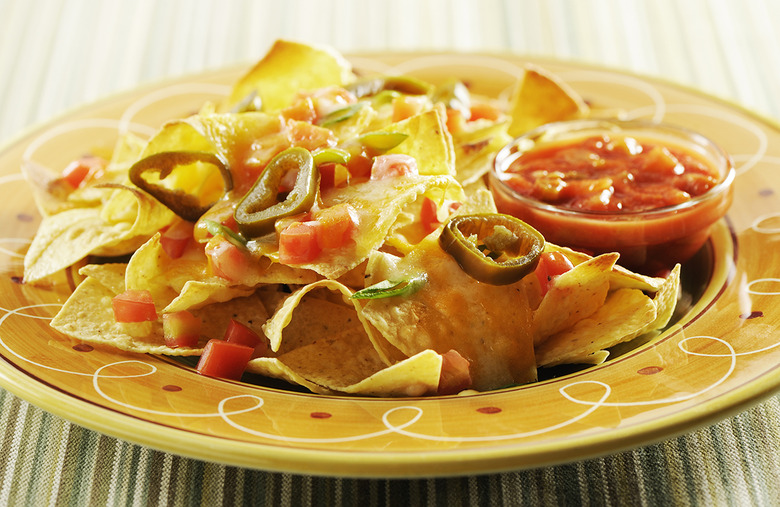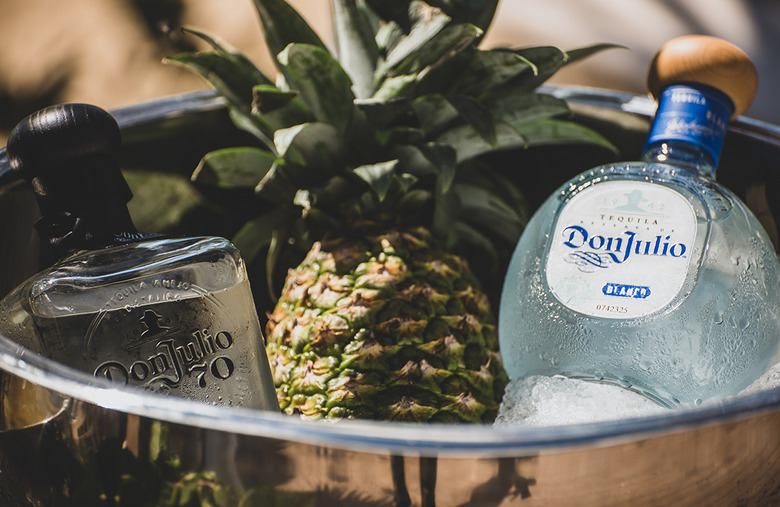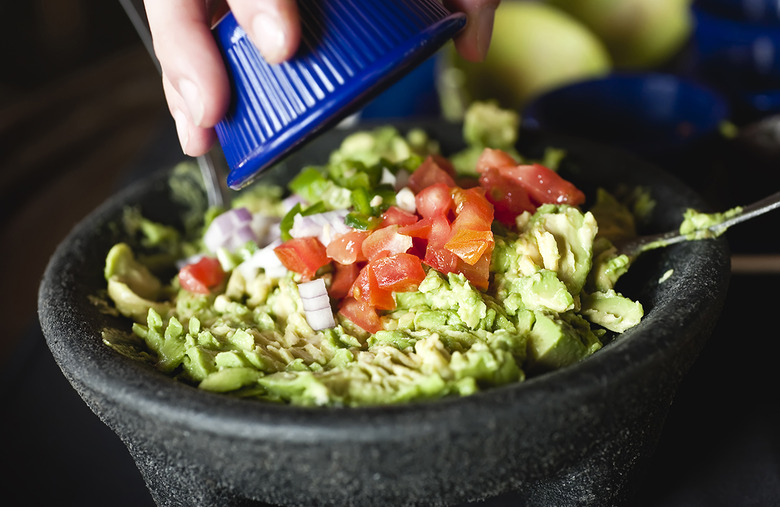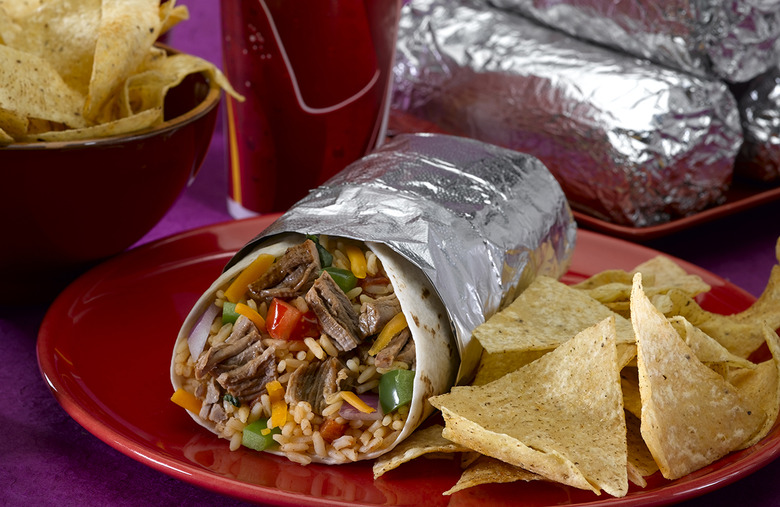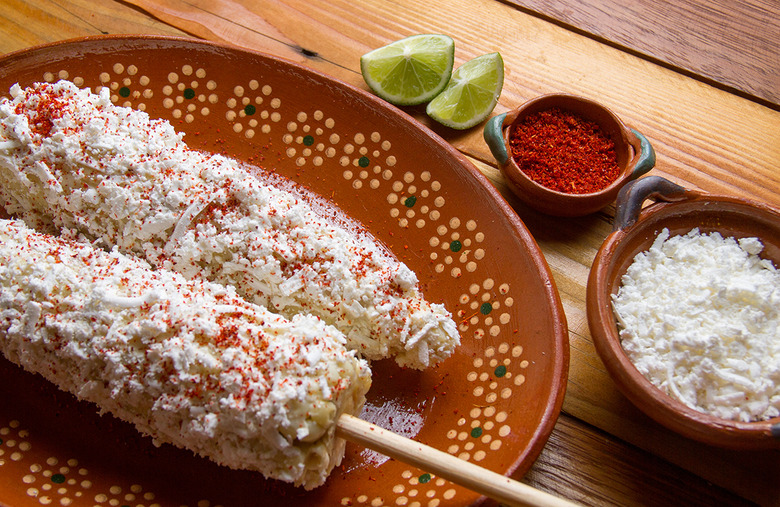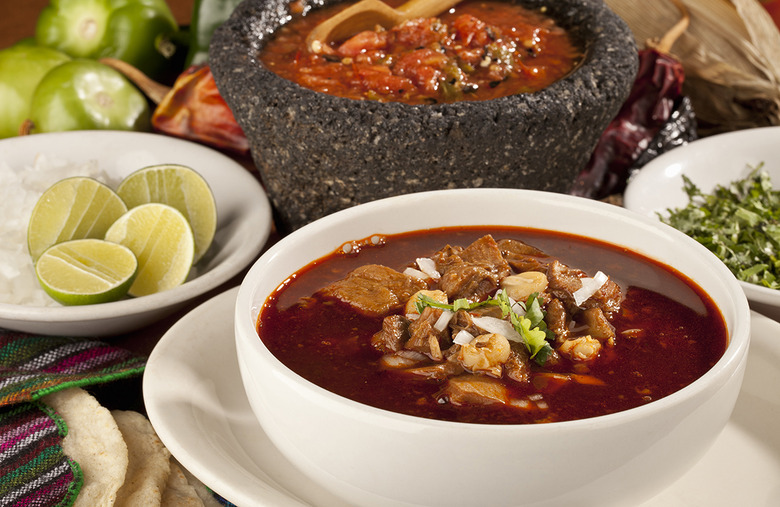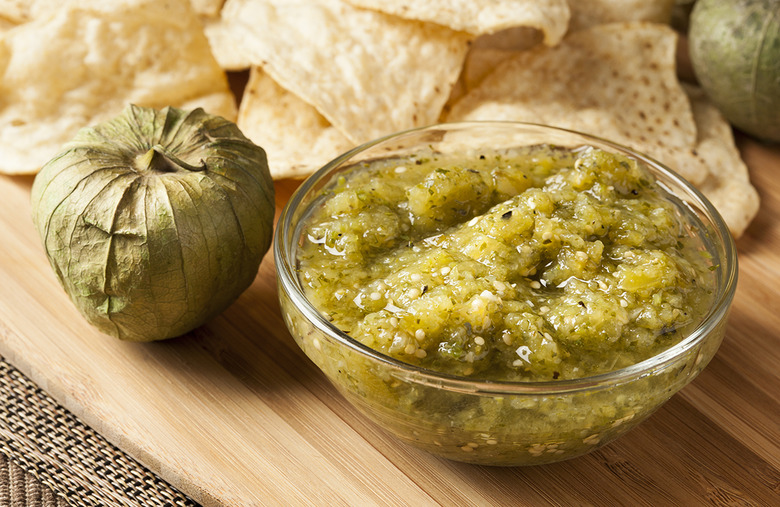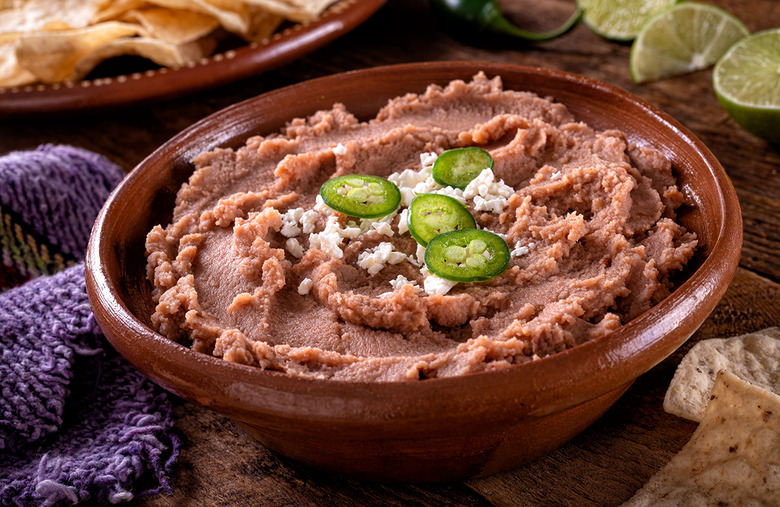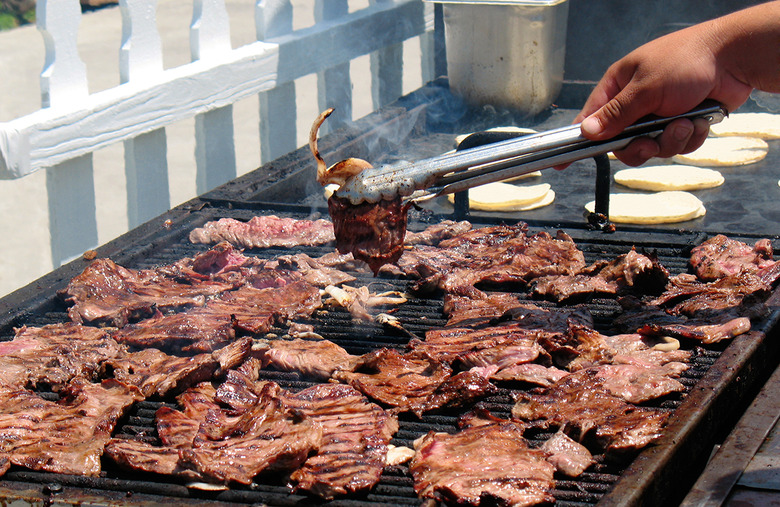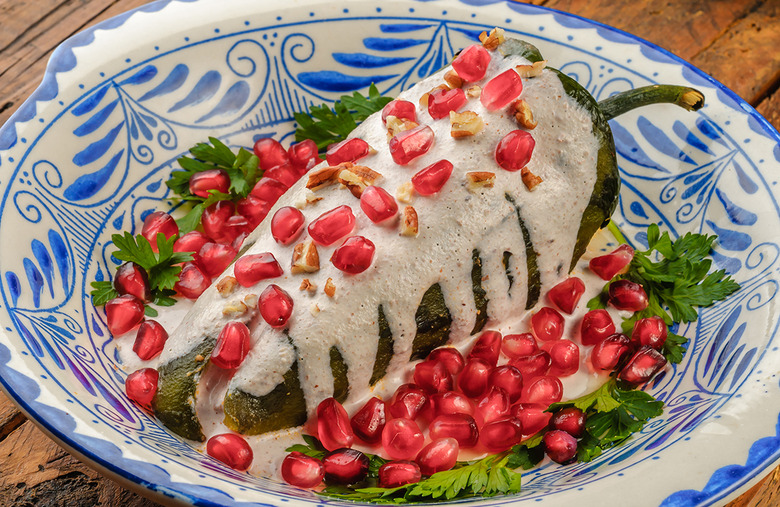Who Invented Tacos? The History Of Popular Mexican Foods
We all have our favorite classic Mexican dish. Whether it's something traditional like tacos or a Tex-Mex fusion like fajitas, there are plenty of options to fill your belly. Some foods are even easy enough to make at home and make you feel like you're eating at a Mexican restaurant. But do you know the history behind your favorite Mexican dishes? How did some of them become some of the most popular foods in America?
Enchiladas
Enchiladas are another one of the most well-known traditional Mexican dishes. The first mention of enchiladas was in the 19th century, but they didn't become popular until the beginning of the 20th century. Some people attribute the origin of this dish to the Aztecs, but there's no clear evidence that their meals resembled what we know today as enchiladas. In Mexico, enchiladas are usually topped with fresh cream, fresh cheese and onion rings. In the United States, they are often topped with melted cheese and served with a side of Mexican rice and refried beans, pico de gallo, guacamole and shredded lettuce. Enchiladas can seem intimidating, but they're actually an easy dish that you can make in less than an hour.
Tacos
Whether you enjoy them with beef, pork or chicken, in a hard or soft tortilla shell, tacos are a staple in Mexican food. The roots of some of the best tacos can be traced to the mid-19th century. During this period, Mexico was in its early industrialization phase and women who migrated to Mexico City would make a living by selling food on the street to workers, using different recipes from their region. Early tacos would be filled with inexpensive organ meats and other humble ingredients. Tacos made their way to the United States in the early 1900s, when they started taking on the appearance of the Mexican-American style of taco that we see today, with the distinctive U-shaped fried tortilla shells stuffed with ground beef, iceberg lettuce and cheddar cheese.
Tortas
Across the different regions of Mexico, the variations of tortas, from the type of bread to the fillings, are seemingly endless. A traditional torta can be prepared on a bolillo, the Mexican version of a French roll, or telera bread, which is flatter and wider. Refried beans and mayonnaise are typically spread on both sides of the sliced bread, which is then stuffed with beef, chicken, ham, seafood and many more options. The sandwich is topped with a variety of garnishes such as onions, tomatoes, avocado and more. Not much is known about the origin of these delicious sandwiches, but some believe inspiration was taken during the French colonization, when the French introduced the tradition of baking bread to Mexicans, who created their own modified varieties.
Mole
Mole is a thick, spicy sauce that is usually served with chicken, turkey, pork and other kinds of meats. This sauce is made with chili peppers you may find in some of the world's spiciest hot sauces, chocolate and other condiments mixed together. The word derives from "molli," which means sauce in the spoken language of the Aztecs. Many people associate this sauce with Puebla, Mexico, but each state in Mexico has its own version. There are multiple stories about how this spicy sauce came to be. One legend is that in the 17th century, a nun threw together all the ingredients she had on hand when she had an unexpected visit from the Archbishop of Puebla and the Viceroy of New Spain.
Tortillas
Tortillas are a staple found in many dishes in Mexico and Central America. Tortillas have changed and evolved in many ways into the dishes that we enjoy eating today. A traditional tortilla is made of masa, or corn dough, boiled in water with lime and then cooked over a fire on a flat pan. The original corn tortilla can be traced back to when corn was first domesticated in Mexico at least 8,000 years ago. With the introduction of wheat during the 16th century, different kinds of tortillas formed, such as the soft wheat flour tortillas used for burritos today. Use a tortilla to create a different spin on the classic grilled cheese sandwich.
Quesadillas
The name quesadilla comes from its main component: cheese. All you need to do is grab a flour or corn tortilla, fold it with some melted cheese and you have yourself a quesadilla. But there are other ingredients that can be added such as meat, beans and potatoes. Cheese may be considered by some to be a quintessential ingredient in this appetizer, but in Mexico City, cheese isn't mandatory and you may need to ask for it in your quesadilla.
Fajitas
Fajitas are one of the most iconic restaurant dishes found in Texas. There have been studies on the origin of this popular Tex-Mex dish and iterations date back as far as the 1930s. On ranches in the southern and western parts of Texas, Mexican cowboys were given parts of the cattle, such as the hide, head, entrails and meat trimmings like the skirt, as a part of their payment. Other dishes, like menudo, were also made from those cuts of meats. But the fajita used skirt steak that was marinated in lime juice and cooked over an open fire before being served with a wheat flour tortilla and different condiments.
Menudo
It may not be clear exactly where this dish originated, but menudo is enjoyed in Mexico as well as other countries throughout Latin America and even Spain and Portugal. Of course, each country has its own spin and name for the dish, but in Mexico, menudo means "little" or something of little value, which might refer to cuts of meat such as chicken wings or cow feet. However, the Mexican dish uses only cow stomach along with spices, vegetables, chili peppers and more to form a soup. You can take an online cooking class to learn how to make this hearty dish at home.
Tamales
The origin of tamales can be traced as far back as 7000 B.C. to a dish that was prepared and consumed by the indigenous people in Mexico and Central America. The Mexican word "tamal" comes from the Aztec word "tamalli," which describes a type of corn cake or dough that is individually wrapped in banana leaves or corn husks and then steam-cooked. Tamales also have fillings like meats, vegetables, fruits and beans with chili or salsa poured on top. They're one of many beloved foods that have been around for more than 100 years.
Chalupas
Chalupas are a popular snack food in Mexico. Though you may find different variations of the chalupa all over the country, the traditional chalupa can be found in the city of Cholula in Puebla, Mexico. Unlike the ones found at the famous fast food restaurant Taco Bell that more closely resemble tacos, the Mexican chalupa is a small thick pie of corn dough in the shape of a little boat. It's then loaded with salsa, shredded lettuce, crumbled cheese and sometimes meat.
Nachos
Nachos are one of the most delivered foods in America during the coronavirus pandemic. This popular snack food is served at restaurants, bars and even movie theaters. How did this Tex-Mex delight become so common in America? The first plate of nachos was introduced in a restaurant on the border of Mexico and Texas. Ignacio "Nacho" Anaya, a worker at that restaurant, was asked to prepare snacks for the wives of some American Army officers. The cook was out, so Anaya grabbed a bunch of fried tortillas, spread some yellow cheese on them and then heated the dish up. He added sliced jalapenos and served it to the women. Nachos took Texas by storm and were sold at a concession stand at the Texas State Fair in Dallas in 1964.
Tequila
Not only is tequila Mexico's national liquor, but it is also a popular ingredient used in some of your favorite cocktails. Tequila originated in a town with the same name located in the state of Jalisco, Mexico. This drink was produced by using locally grown agave plants and the European technique of distilling liquor. The agave plant has been cultivated since ancient times to produce a fermented drink with low alcohol content called pulque. However, instead of being consumed right away, pulque goes through the distillation process to become tequila.
Guacamole
Guacamole is one of the well-known sauces around the globe. Take some tasty avocados and mash them together with chili pepper, onions, garlic, lime juice, salt and pepper to create the perfect guacamole. Avocadoes, a fruit that some people have mistaken as a vegetable, have been cultivated for food as far back as 10000 B.C., but guacamole didn't come into the picture until the colonial period in Mexico. The popular snack has roots in similar dishes prepared by the Aztecs, but the first mentions of the guacamole we know today didn't appear until the early 20th century.
Burrito
You don't have to live in Mexico to eat some of the best burritos, but do you know the story of how this quintessential dish came to be? Some food historians link the origin of the burrito to the Mayas and Aztecs as tortillas played a major role in their dishes. It was also influenced by Spanish explorers who arrived in Mexico during the 16th century and introduced foreign ingredients to the country, including wheat. This gave rise to the wheat flour tortilla, which is more pliable compared to a corn tortilla, making it possible to wrap it around a large number of ingredients.
Elote
Elote is one iconic street food worth trying. This snack can be found at most festivals and markets in Mexico, but it has become a familiar item that can easily be found in American cities like Los Angeles and New York. To make elote, vendors take a long ear of corn that has been either boiled or grilled and top it with mayonnaise, lime, cheese and chili powder or other condiments and seasonings. This traditional snack can take many forms, like being sold in cups or cones, and it is also a symbol of how corn has played a major role in Mexican cuisine since it was domesticated more than 8,000 years ago.
Pozole
Pozole is a traditional Mexican soup or stew made out of corn, pork or other meats and condiments. The traditional pozole originated in the state of Jalisco, Mexico, but there are different variations of the soup. Though the origin of pozole isn't clear, some historians make connections to different dishes that mixed corn and other vegetables during the pre-Columbian time. Pozole ingrained itself as a Mexican favorite during the 1920s when it was served during cultural festivals celebrating Mexican traditions, music and food. Since then, it has become a traditional dish served at parties, celebrations and around Christmas. This soup is a great dish to make ahead and freeze for a weeknight.
Salsa
Much like guacamole, salsa is an important sauce in Mexican cuisine. Though some people may think salsa refers to a spicy red tomato-based sauce, in Mexico, salsa is a generic term for any sauce used as a condiment on tacos, as a meat marinade and more. Salsa has been around since the time of the Aztecs and comes in many forms from salsa verde, made with tomatillos, jalapenos, cilantro and more that are blended together, to pico de gallo, which uses fresh chopped tomatoes, chopped garlic and more dressed in oil and lime juice. The first known manufacturer that brought salsa to the American market was Pace Foods out of San Antonio in 1947. These days, it's easy to find a jar of salsa at your local grocery store to go along with your favorite crunchy tortilla chips.
Frijoles
Frijoles is a term used to refer to beans used in Mexican dishes. Much like corn, beans are a staple when it comes to Mexican cooking and are a main source of protein in Mexico and other countries. Not only are beans one of the oldest cultivated plants in America and Mexico, but they are also easy to cultivate, so it's no surprise that many of your favorite Mexican and Tex-Mex dishes include beans. However, a fun fact about Texas-style chili is that it actually doesn't include beans.
Carne asada
Carne asada can be best described as thinly sliced beef seasoned with salt, pepper, garlic salt and other spices and then grilled over an open barbeque. But it wasn't until Spanish explorers introduced domesticated animals such as pigs and cows to Central America that this dish came into being. By 1526, Mexico City had a regular supply of beef, which led to the creation of dishes such as carne asada tacos. Carne asada also makes a tasty addition to your eggs.
Chiles en nogada
This traditional dish takes the spotlight during Mexico's Independence Day celebrations. Chiles en nogada is made of chilis stuffed with ground pork and dried fruits and then covered in a creamy nut sauce. Nuns from Puebla, Mexico, are credited with inventing this dish in 1821. When asked to prepare a dish for Mexican General Agustin de Iturbide, they used local ingredients that were in season. The stuffed chilis were topped with the nut sauce but also garnished with parsley and pomegranate seed to highlight the colors of the Mexican flag — green, red and white — making it one of the best dishes to eat on that holiday. Much like how this dish was created, there are many recipes you can make at home by using ingredients already in your pantry.
More from The Daily Meal:
Restaurant Secrets Every Home Cook Should Know
Easy, Fun Recipes to Make At Home With Kids During Coronavirus Quarantine
The Best Ways to Cook Cheap Steaks
Cooking Tips We Learned From Our Parents
20 Brilliant Meal Prep Hacks That Will Save You Tons of Time
